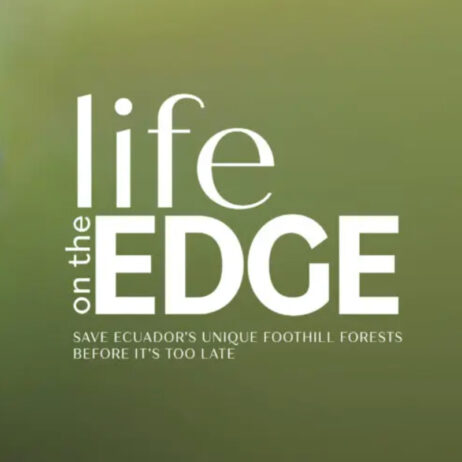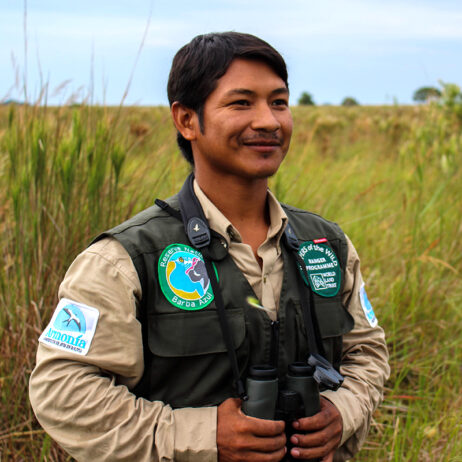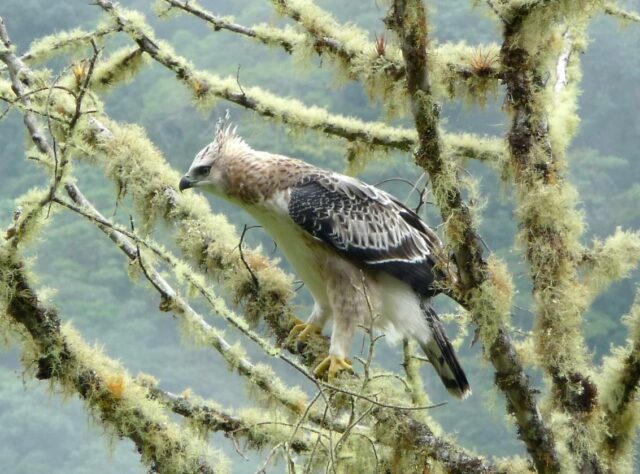
The awe-inspiring Black-and-chestnut eagle is one of the many beautiful species that rely on the Río Zúñac and Río Anzu reserves for survival. Credit: Lou Jost
Let us introduce you to one of the most biodiverse places on the planet. A place with more endemic plants than the Galapagos Islands, and nearly 100 newly discovered species of plants and animals: the upper Río Pastaza watershed.
Here, in the heart of Ecuador, lie two reserves that are home to an array of at-risk species: Río Zúñac and Río Anzu. It is these two reserves that you can expand, protect and support through our Life on the Edge appeal, alongside World Land Trust (WLT) partner Fundación EcoMinga.
Of course, as with any appeal, it is important to stop for a while and think about the multiple species that are forced to live a life on the edge, continually pushed towards endangerment or extinction by the destruction, degradation, and fragmentation of their habitats.
Today, we are going to delve into a few fun facts about some of the wonderful species living in the Río Zúñac and Río Anzu reserves. It is these threatened animals whose lives could be forever changed thanks to your generosity.
A British icon in Ecuador
The enigmatic Spectacled Bear can at times be seen pawing its way through the cloud forest habitat of the Río Zúñac and Río Anzu reserves. It is the largest carnivore in that part of the world, and sports some impressive, distinctive white or brown markings encircling its eyes, hence the ‘spectacles’.
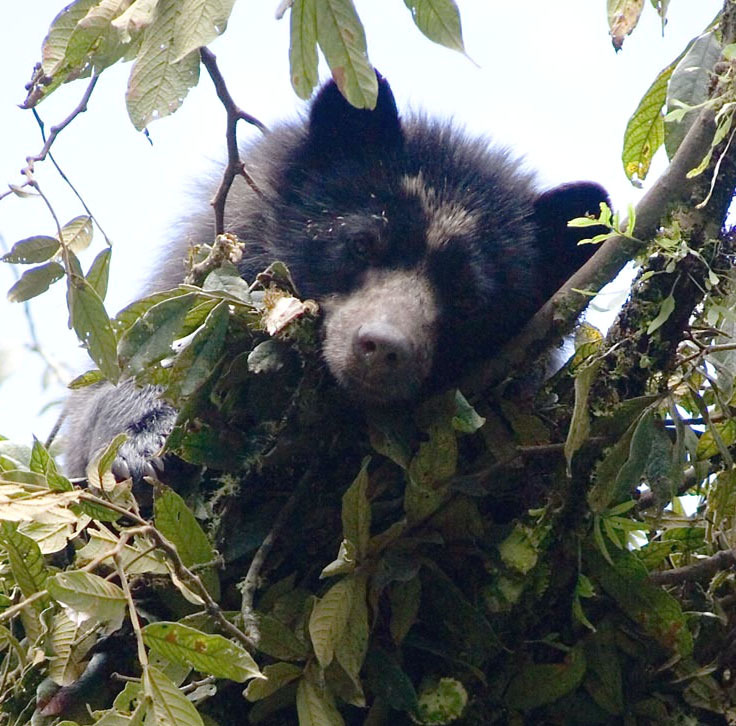
A stunning Spectacled Bear. Credit: Lou Jost
Did you know that the Spectacled Bear is the only bear native to South America? In fact, Paddington Bear himself was a Spectacled Bear! That must make the Tremarctos ornatus one of the most famous bears in the world!
With the additional 1,086 ha (2,683 acres) of habitat that you can help purchase through our Life on the Edge appeal, the Spectacled Bear will be able to travel freely through protected corridors. It will have more space to forage for food, and to make a home.
The littlest tapir
The cloud forests of Ecuador are one of the only places in the world in which you can find the adorable Mountain Tapir. It is the smallest of all the species in its genus, and also one of the most threatened. Mostly active at dawn and dusk, the Mountain (or Woolly) Tapir has a prehensile trunk which works like a fifth limb.
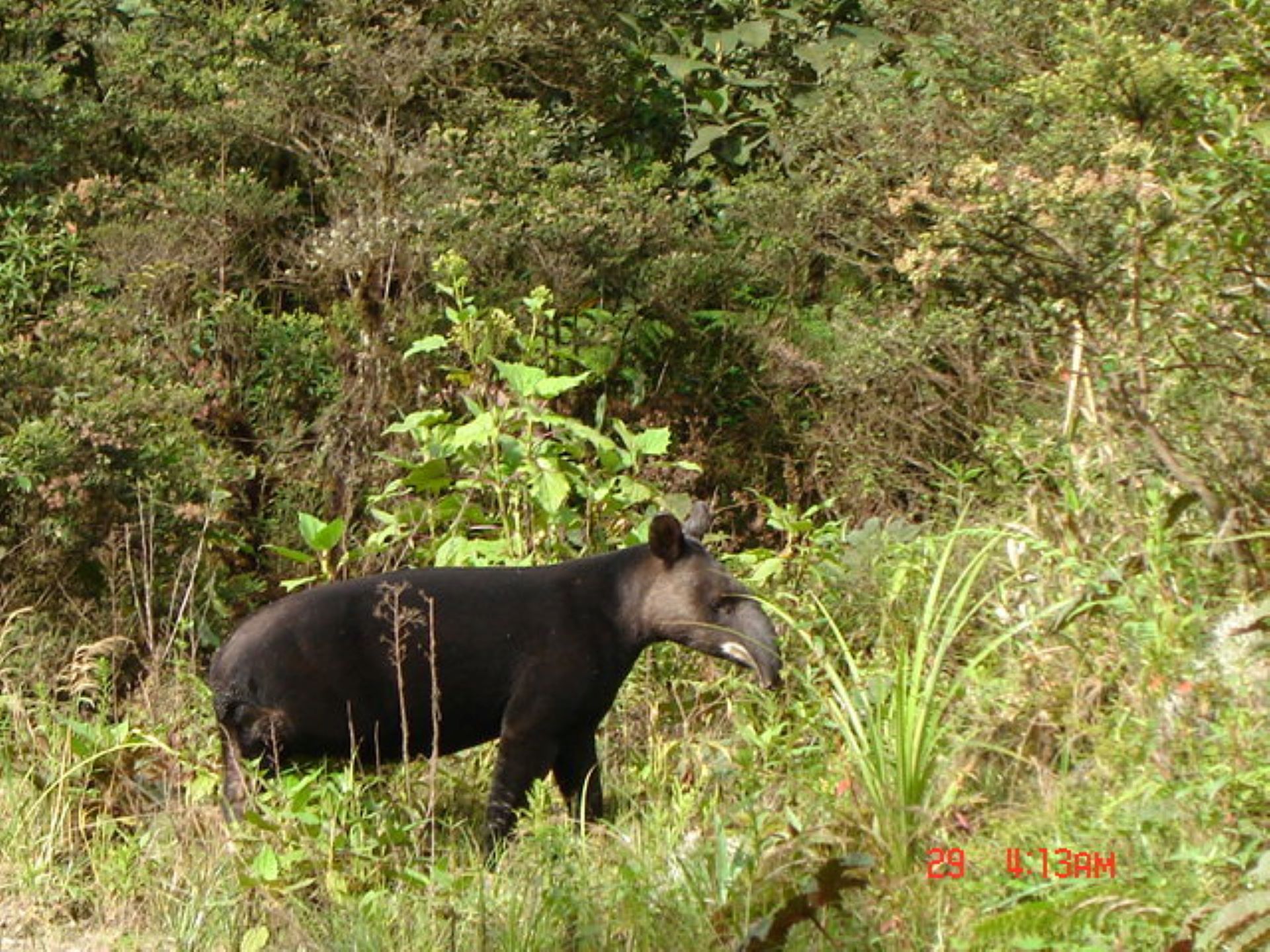
A Mountain Tapir in its natural habitat. Credit: Francisco Sornoza
The Life on the Edge campaign will give the Mountain Tapir room to thrive, aiming to connect Río Zúñac and Río Anzu through Llanganates National Park which lies between the two reserves.
A very fast monkey
If you were to look into the canopies of the Río Zúñac and Río Anzu reserves, you may catch a glimpse of a woolly blur amongst the treetops, swinging from branch to branch. The Woolly Monkey is one of the species that lives in the wonderful reserves and, along with the help of its flexible tail, it can reach speeds of up to 35mph whilst traversing the treetops!
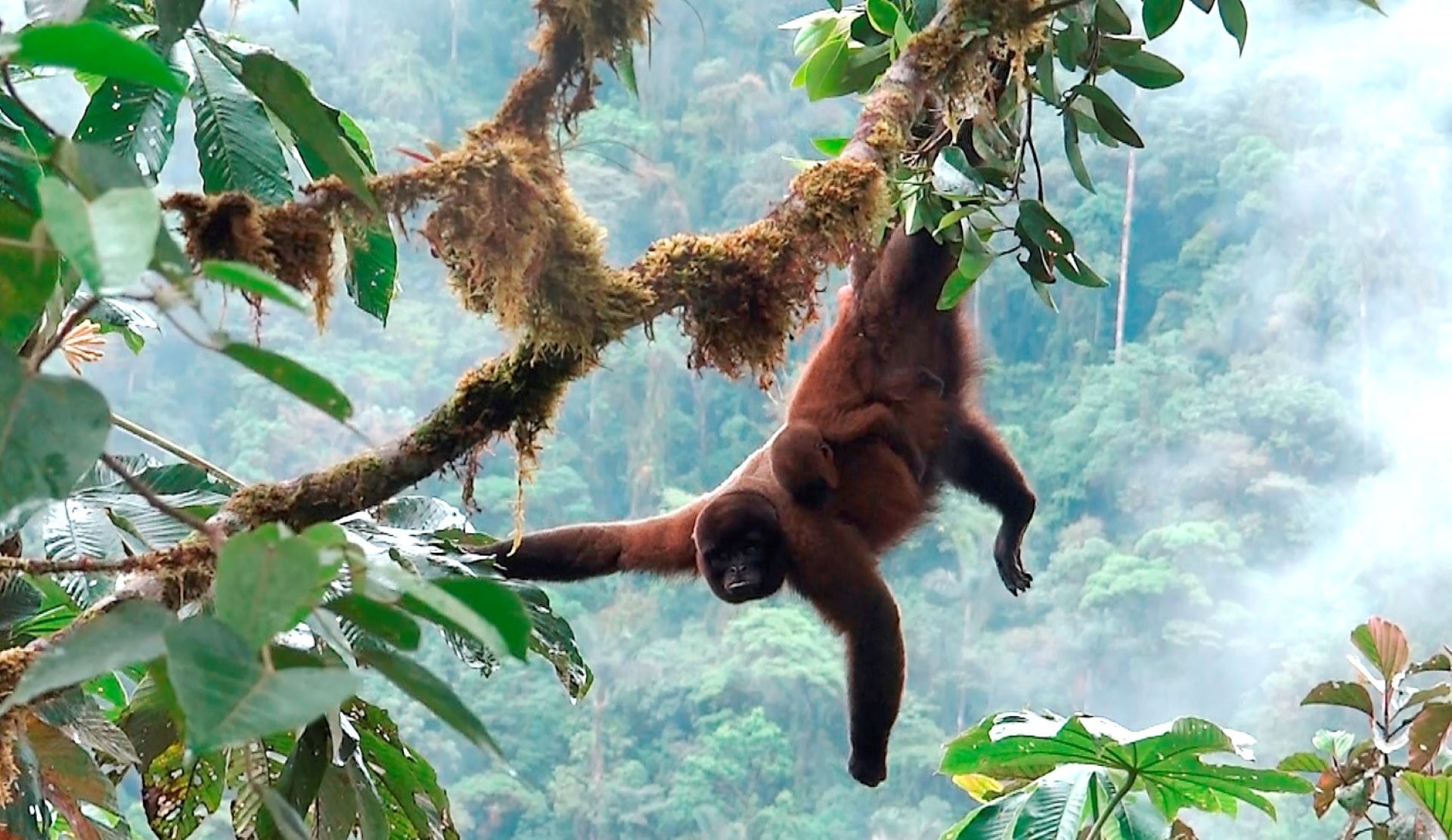
A Woolly Monkey swinging through the trees. Credit: Fundación EcoMinga
As you can imagine, the Woolly Monkey loves to explore and expand its horizons, swinging from branch to branch. With the Life on the Edge campaign, we can protect even more trees for our woolly friends to traverse, so they can continue to move uninhibited and protected.
A whole new toad
That’s right! In the Río Zúñac reserve, a species of toad entirely new to science was discovered. Its name? Simpson’s Plump Toad. It was named after Nigel Simpson, a World Land Trust council member. The toad is distinctive thanks to its fourth and fifth toes, which are longer than its others. It is typically a dark to light brown, with orange to yellow flanks, and a cream yellow throat.

The newly discovered Simpson’s Plump Toad. Credit: Nigel Simpson.
With any luck, as we look to expand the reserves, more currently undiscovered species of toad (or indeed any other animal) could make themselves apparent. Alongside Simpson’s Plump Toad, Zúñac has already produced four new species of frog!
The beautiful Black-and-chestnut Eagle
Easily one of the most impressive species found in the Río Zúñac and Río Anzu reserves, the majestic Black-and-chestnut Eagle can be seen soaring elegantly through the Ecuadorian skies. With an impressive wingspan of up to 180cm, and black plumage mixed with chestnut on its breast and belly, the Black-and-chestnut Eagle certainly cuts quite the figure. It is one of the most iconic, easily recognisable species not just in Ecuador, but in South America as a whole. The two reserves in the upper Río Pastaza watershed are crucial spots for the bird, allowing it to nest and hunt free from danger.
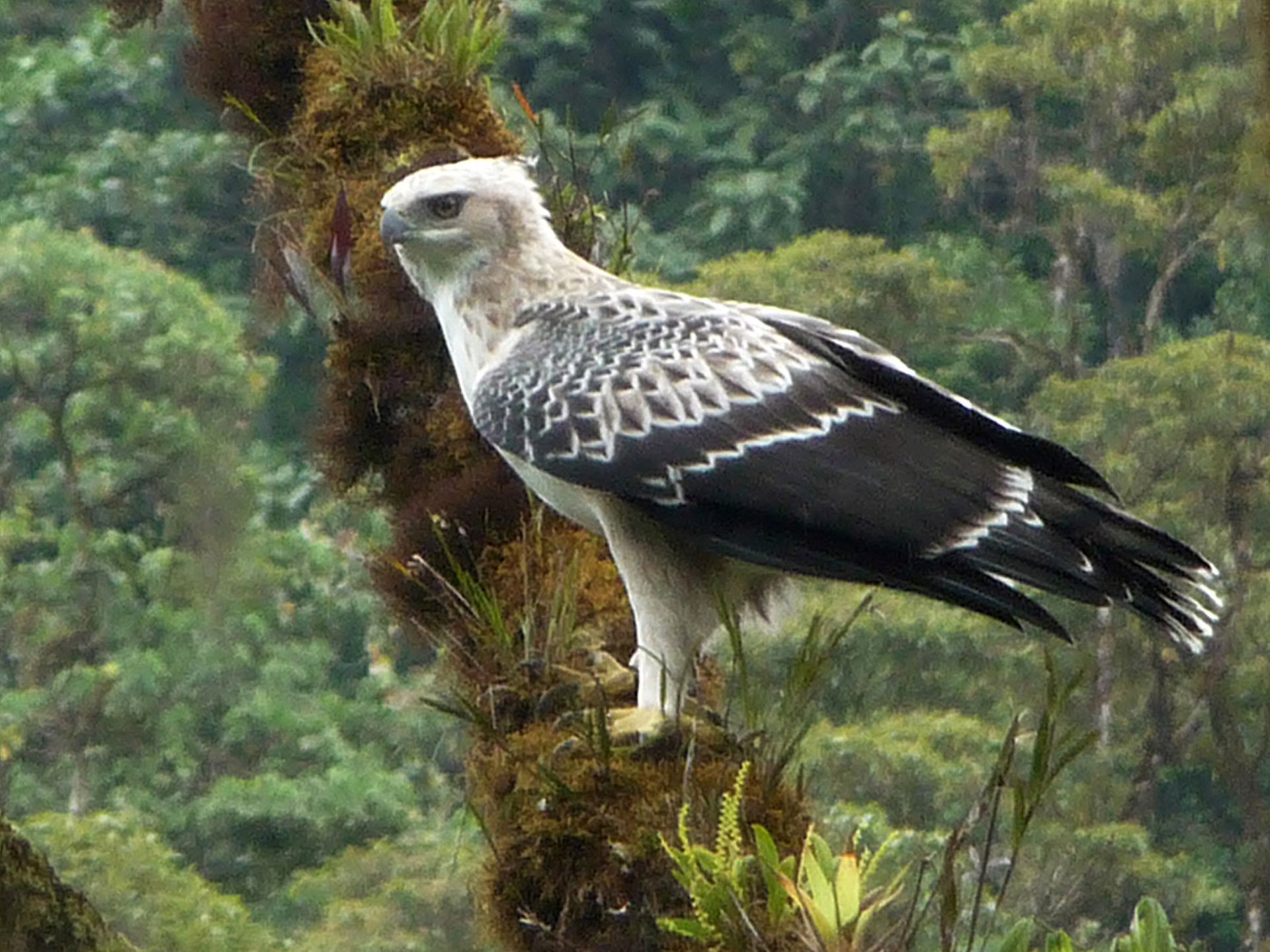
The Black-and-chestnut Eagle surveying the land. Credit: Luis Recalde
Lou Jost, President of Fundación EcoMinga, had this to say about the beautiful Black-and-chestnut Eagle:
“I have had a personal connection with Black-and-chestnut Eagles since before EcoMinga existed. As a child I was fascinated by raptors, and back in the late 1960s my parents bought me a big reference book called ‘Birds of Prey of the World’. I dreamed about the exotic eagles in that book, and the Black-and-chestnut Eagle was the most mysterious of them all. At that time almost no-one from the outside world had ever seen it, and almost nothing was known about it. I am amazed that my life has now intersected with this bird – that I can play a part, through EcoMinga and with help from bird enthusiasts around the world, in its conservation.”
With your help, and the donations matched to triple their gift value over the course of Big Match Fortnight (12-26 October), we can bring protection to so many species forced to live life on the edge. We can secure the reserves to ensure that the plantations, cattle pastures, and oil projects that threaten them will not be able to encroach any further.
The upper Río Pastaza watershed is an area of unprecedented beauty, environmental importance, and astounding biodiversity. It is as rich in potential as it is in wildlife; if protected, it can thrive as a hotbed of conservation – a beacon of hope in the face of the threats facing the natural world.
Together, we can truly make a difference. By supporting our Life on the Edge appeal, you can help our partner EcoMinga to save land, save lives, and safeguard the future of our planet and the species that we share it with.
